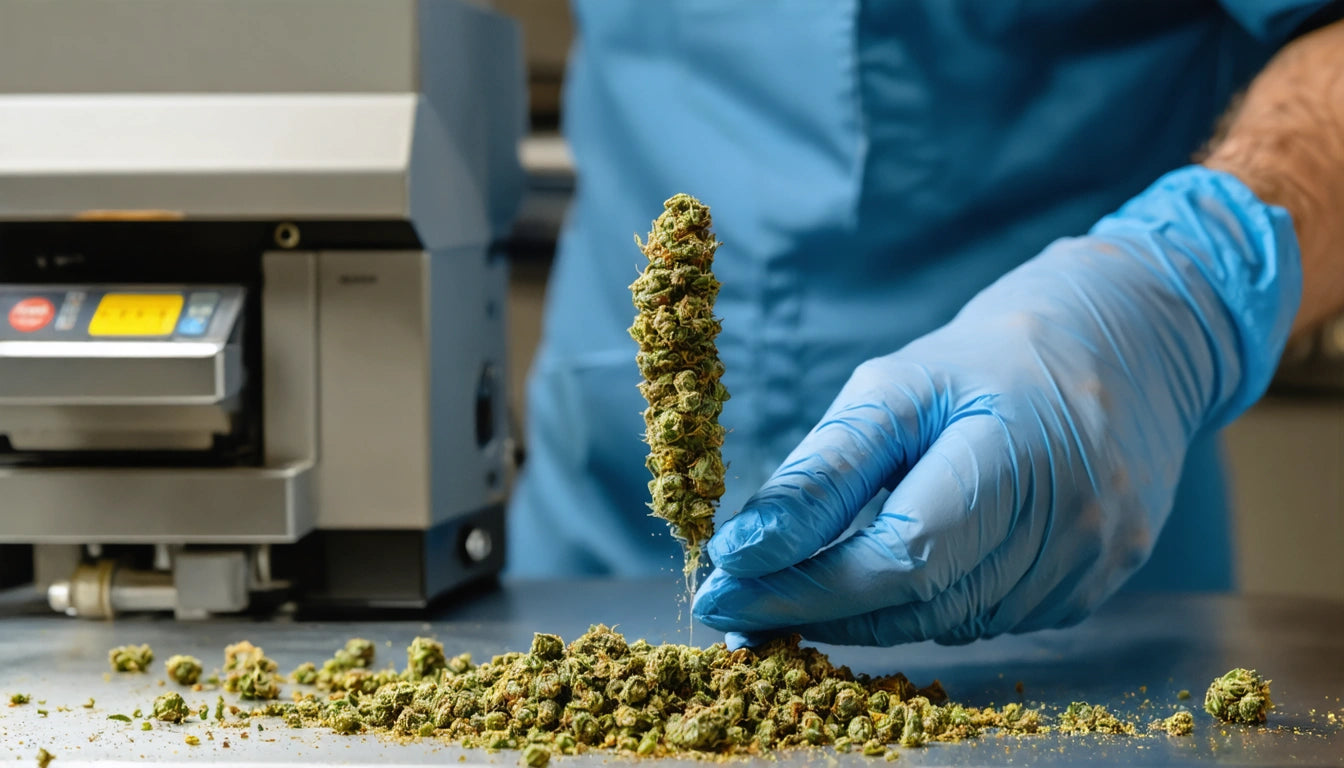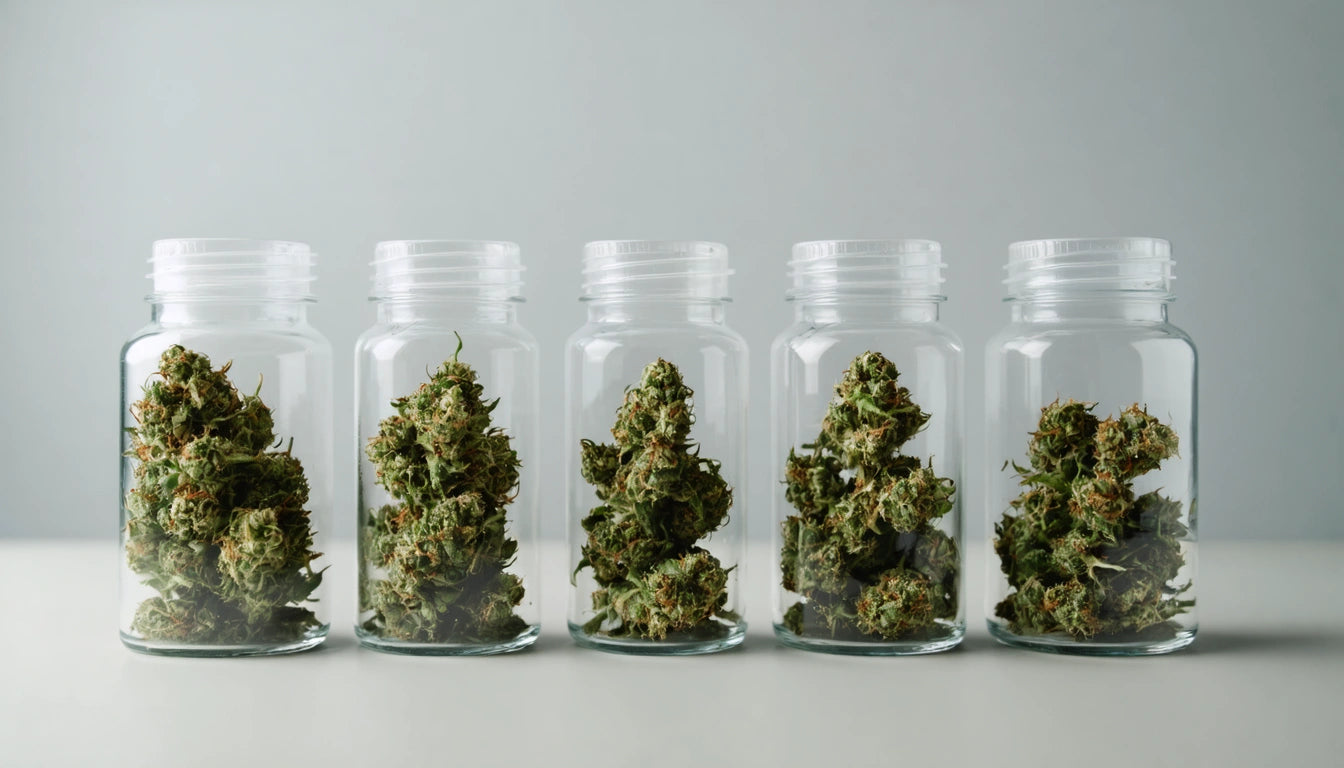Table of Contents
Pre-rolls have become one of the fastest-growing segments in the cannabis market, offering convenience and consistency to consumers. A common question among cannabis enthusiasts and industry professionals is whether these products are crafted by hand or manufactured using automated machinery. The answer isn't straightforward, as both methods are prevalent in today's market, each with distinct advantages and considerations.
Evolution of Pre-Roll Manufacturing
The cannabis pre-roll market has evolved significantly from its origins in hand-rolled joints. Initially, all pre-rolls were hand-crafted, reflecting the traditional approach to joint rolling. As consumer demand increased and cannabis legalization expanded across states, manufacturers needed more efficient production methods to meet market requirements.
Today's pre-roll manufacturing landscape features a spectrum of approaches, from artisanal hand-rolling operations to fully automated production lines capable of producing thousands of units per hour. This evolution mirrors the industry's growth from small-scale operations to commercial-scale production.
Hand-Rolling Process and Benefits
Hand-rolled pre-rolls remain popular, particularly among craft cannabis brands and those emphasizing artisanal quality. The hand-rolling process typically involves several steps:
- Flower preparation (grinding to appropriate consistency)
- Filter/crutch placement
- Even distribution of ground cannabis
- Careful rolling technique
- Sealing and finishing
Advocates of hand-rolling point to several benefits, including greater control over the final product. Skilled rollers can adjust packing density, ensure even distribution, and create a product that burns smoothly and evenly. Many consumers believe hand-rolled pre-rolls deliver superior experiences compared to machine-made alternatives.
Machine-Made Pre-Rolls: Technology and Efficiency
Machine manufacturing has revolutionized pre-roll production, allowing brands to scale operations while maintaining consistency. Modern pre-roll machines range from semi-automated cone-filling devices to sophisticated systems that handle the entire process from grinding to packaging.
Key advantages of machine-made pre-rolls include:
- Consistency across batches
- Higher production volume
- Reduced labor costs
- Precise weight control
- Standardized appearance
Large-scale producers typically rely on automated systems to meet demand, particularly for standard product lines. These machines can produce hundreds or thousands of units per hour with minimal human intervention, making them essential for brands serving multiple markets.
Quality Comparison: Hand-Rolled vs. Machine-Made
Burn Rate and Evenness
Hand-rolled pre-rolls often receive praise for their burn characteristics when crafted by skilled rollers. The human touch allows for adjustments based on the specific cannabis being used, potentially resulting in a more even burn. However, inconsistency between rollers can lead to variable experiences.
Machine-made pre-rolls offer consistency but may sometimes suffer from either overly tight or loose packing, affecting the burn rate. Advanced machines have improved significantly in recent years, narrowing the quality gap.
Potency Preservation
Some cannabis enthusiasts argue that hand-rolling is gentler on trichomes, potentially preserving more cannabinoids and terpenes. However, studies on potency preservation in pre-rolls suggest that storage conditions have a far greater impact on maintaining potency than the rolling method.
Packaging Considerations for Different Pre-Roll Types
Whether machine-made or hand-rolled, proper packaging is essential for maintaining freshness and complying with regulations. All pre-rolls require child-resistant packaging to meet safety standards and regulatory requirements.
According to guidelines from the Consumer Healthcare Products Association, proper child-resistant packaging must be significantly difficult for children under five to open while remaining accessible for adults. This safety measure is particularly important for cannabis products, including pre-rolls, to prevent accidental consumption.
For optimal preservation, many brands use airtight containers with humidity control to extend shelf life and maintain quality, regardless of the manufacturing method used.
Industry Trends Shaping Pre-Roll Production
The pre-roll segment continues to evolve, with several trends influencing manufacturing approaches:
- Hybrid Production Models: Many brands now employ a combination of machine filling with human quality control and finishing touches.
- Specialized Products: Infused pre-rolls often require more complex manufacturing processes that combine automation with careful human oversight.
- Customization at Scale: New technologies allow for mass customization, enabling machine production with variations in size, potency, and ingredients.
- Transparency in Methods: Increasingly, brands are openly discussing their manufacturing processes as part of their marketing strategy, acknowledging consumer interest in production methods.
As the industry matures, the distinction between hand-rolled and machine-made continues to blur. Many premium brands now use semi-automated processes that maintain quality while increasing output, creating products that capture the benefits of both approaches.
Whether choosing hand-rolled or machine-made pre-rolls, consumers should focus on the reputation of the producer, quality of ingredients, and proper storage to ensure the best possible experience.











Leave a comment
All comments are moderated before being published.
This site is protected by hCaptcha and the hCaptcha Privacy Policy and Terms of Service apply.